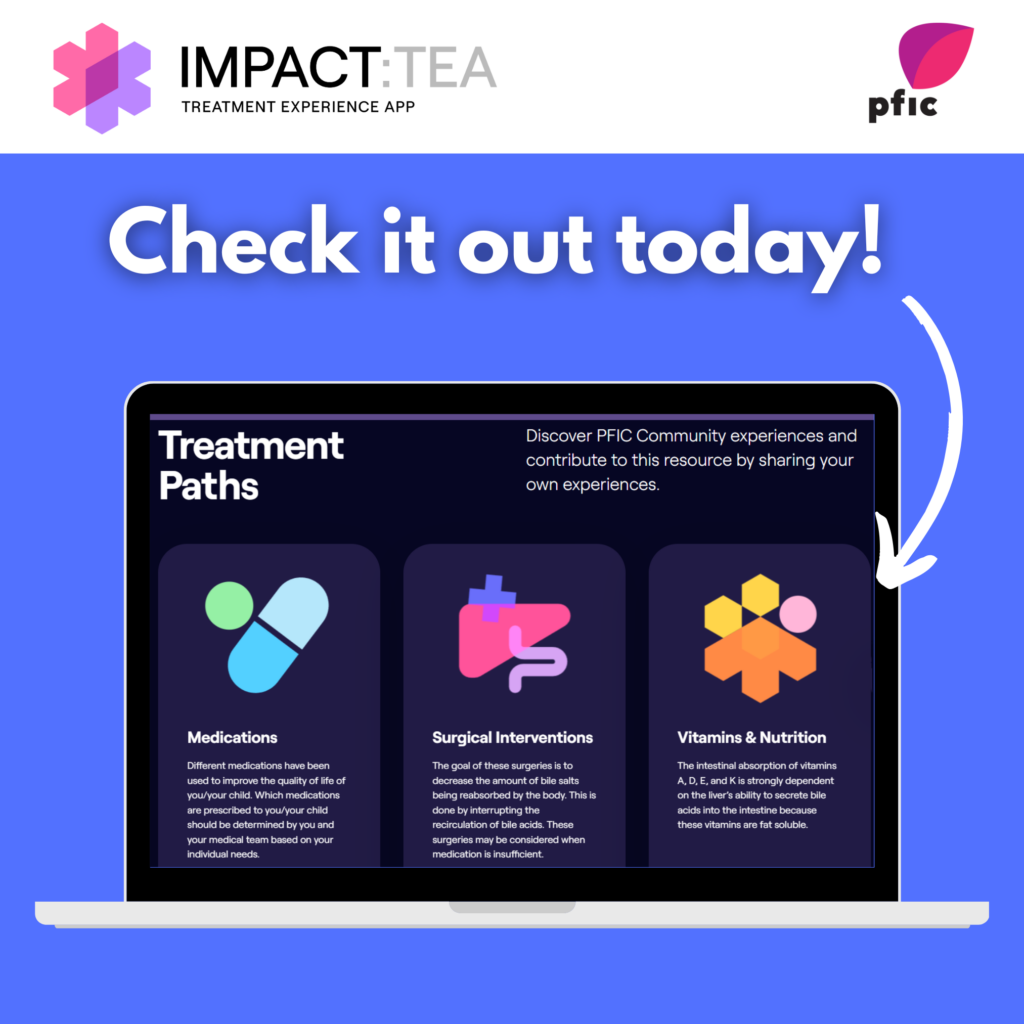Without any treatment, PFIC can lead to cirrhosis and end-stage liver disease at quite variable ages from infancy to adulthood. Some mild forms of MDR3 disease may get better with ursodeoxycholic acid (a helpful bile acid) treatment. Severe PFIC disease does not necessarily get better with medical therapy, although medical therapy may be essential to prevent complications of the underlying liver disease (e.g. nutritional problems). There are different PFIC treatments which depend on the severity, subtype of PFIC and the type(s) of symptoms.
Due to the decreased flow of bile, PFIC patients may have problems with fat malabsorption and fat soluble vitamin deficiencies. This can lead to poor growth and to the symptoms associated with various vitamin deficiencies, such as vision problems, loss of bone density and problems with bruising and bleeding.
MCT(Medium Chain Triglycerides)
PFIC patients often need additional medium chain triglycerides(MCT). MCT is a form of fat that is better absorbed in cholestasis. High levels of MCT can help increase vitamin absorption. There are special infant formulas with added MCT and also MCT supplements better suited for older children and adults.
Fat-soluble vitamins (A, E, D and K)
PFIC patients often require supplementation of fat soluble vitamins to avoid deficiencies.
For more information on formulas, foods and vitamin supplements for PFIC patients check out this PFIC 101 webinar, which features a section on nutrition management.
Ileal Bile Acid Transport (IBAT) Inhibitors
Bile acids are compounds that have an enterohepatic circulation and many theorize that the therapeutic effect of biliary diversion and ileal exclusion on pruritus is specifically related to blocking the circulation of bile acids, leading to their depletion. Over twenty years ago, drugs were developed to specifically block intestinal absorption of bile acids that are secreted by the liver, potentially mimicking the effect of biliary diversion or ileal exclusion. Scientists have tested these drugs as a possible treatment for pruritus in a number of cholestatic liver diseases. The Food and Drug Administration (FDA) has approved several IBAT inhibitors for use in PFIC and Alagille syndrome.
A tube placed in the nose that goes down to the bile ducts to drain bile ducts, has had some success in breaking an episode of BRIC – this is a fairly invasive treatment and is a temporary approach. Read more about nasobiliary drainage.
Partial External Biliary Diversion (PEBD)
The aim of this surgery is to reduce itching by reducing the amount of bile acids re-entering from the intestines into the liver. This may also potentially slow the progression of the liver disease. PEBD involves sewing a small piece of intestine between the gallbladder and a hole in the abdominal wall, called an ostomy. This ostomy allows contents within the segment of intestine to drain externally. To collect drainage from the ostomy, patients will typically have a small bag secured to the outside of their belly. Approximately 30-50% of the bile drains out the ostomy. Patients empty the ostomy bag daily and discard the bile collected in the bag. The remainder of the bile follows the normal pathway through the bile ducts into the intestine.
This surgical procedure has been in use for over 30 years. PEBD is generally well-tolerated by patients and considered to be relatively safe. However, it can be difficult to predict which patients will respond well to this procedure. Two other diversion procedures exist and they avoid the need for an external ostomy: partial internal biliary diversion and ileal exclusion. Overall, there is less information about the outcomes of these two procedures.
Partial Internal biliary diversion (PIBD)
This is a modification of the PEBD operation where a piece of bowel connects the gall bladder to the large intestine. Concerns have been raised about bile infection due to connection to the colon and about possible side effects of bile draining directly into the colon.
During this operation, surgeons bypass the distal ileum. The distal ileum is the section of bowel where bile salts are usually reabsorbed. Like other diversion procedures, the aim of this operation is to reduce the amount of bile salts reabsorbed into the blood stream. The success of the procedure may be dependent on the amount of intestine that is bypassed. Bypassing too much can lead to significant diarrhea, while excluding too little may not be effective. The ileum is critical for absorption of vitamin B12. Individuals who have undergone ileal exclusion may need to monitor their vitamin B12 levels.
Considerations of Liver Transplant
Transplant is often considered if there are severe complications of cirrhosis (advanced scarring of the liver), liver failure develops, there is no improvement after medical/surgical intervention, or if evidence of liver cancer exists. Compared to the diversion surgeries listed above, this is a major operation with significantly greater risks. After surgery, patients may need to take anti-rejection medicines for the rest of their lives, have regular medical follow-up and will be at risk of side effects from the medicines. Many patients with PFIC will require a transplant at some point in their lives.
Response to Liver Transplant
The response to liver transplant may depend upon the type of PFIC and the severity of the mutation. PFIC1 is a systemic disease and liver transplantation may not address all of the problems. In some circumstances severe diarrhea and/or fatty liver disease develops after liver transplantation for PFIC1. By contrast, PFIC2 is liver specific so transplant is a more definitive therapy for PFIC2. In some children with severe mutations in BSEP a type of recurrence of disease occurs after transplantation. Neither of these issues typically affect those with MDR3 deficiency post transplant. Less information is available regarding liver transplantation for defects in TJP2, FXR and MYO5B. The decisions surrounding liver transplantation for PFIC are quite complex. Patients should consult with centers experienced with liver transplantation for these diseases.
Check out our educational webinars on liver transplantation and PFIC-specific liver transplant complications for more information.
Want to learn more about possible PFIC treatments?
Check out the PFIC IMPACT Treatment Experience App (TEA)!
The TEA is an innovative tool co-designed by PFIC families and clinicians to both provide information about PFIC treatments and patients’ experiences with them and to help us learn which treatment outcomes matter most so that we can start to design research studies that are directly relevant to the PFIC community.
The PFIC IMPACT Treatment Experience is a major activity of our patient engagement project, IMPACT. This work is funded through a Eugene Washington Engagement Award (EASO-30455) from the Patient Centered Outcomes Research Institute to prepare the PFIC community to participate as equal partners in research studies.

